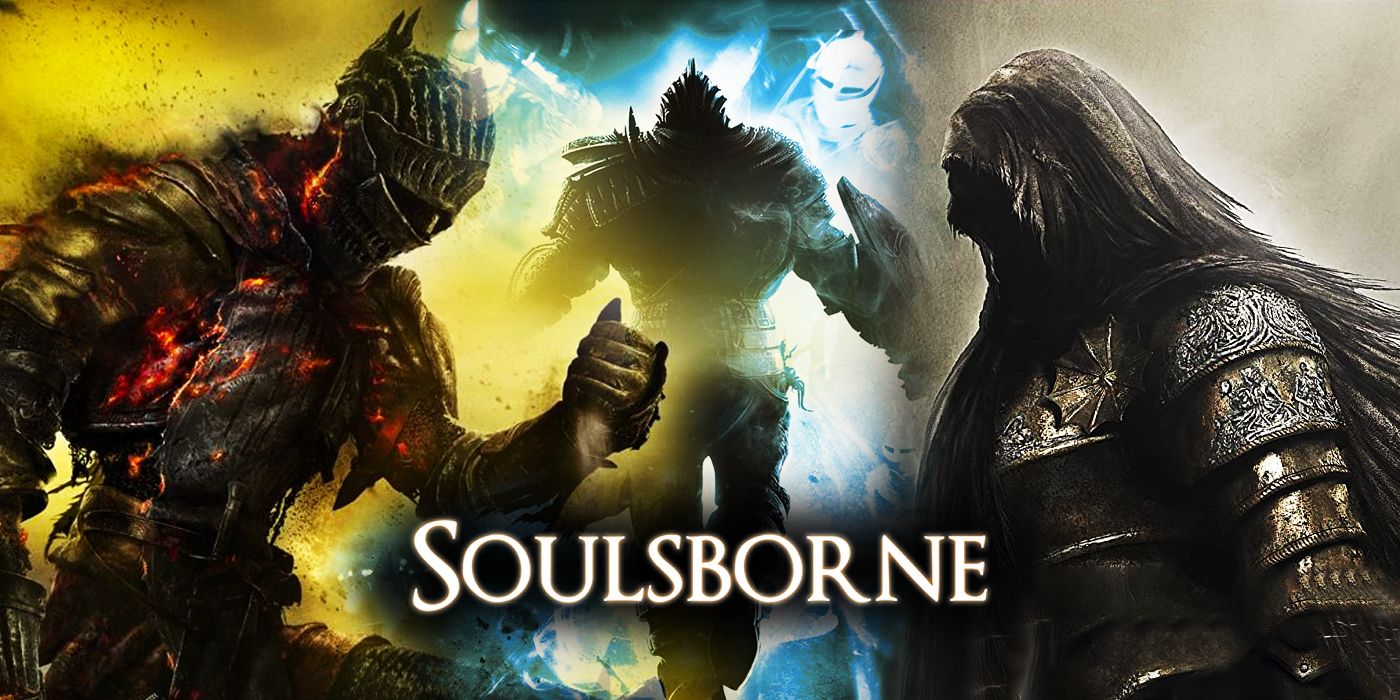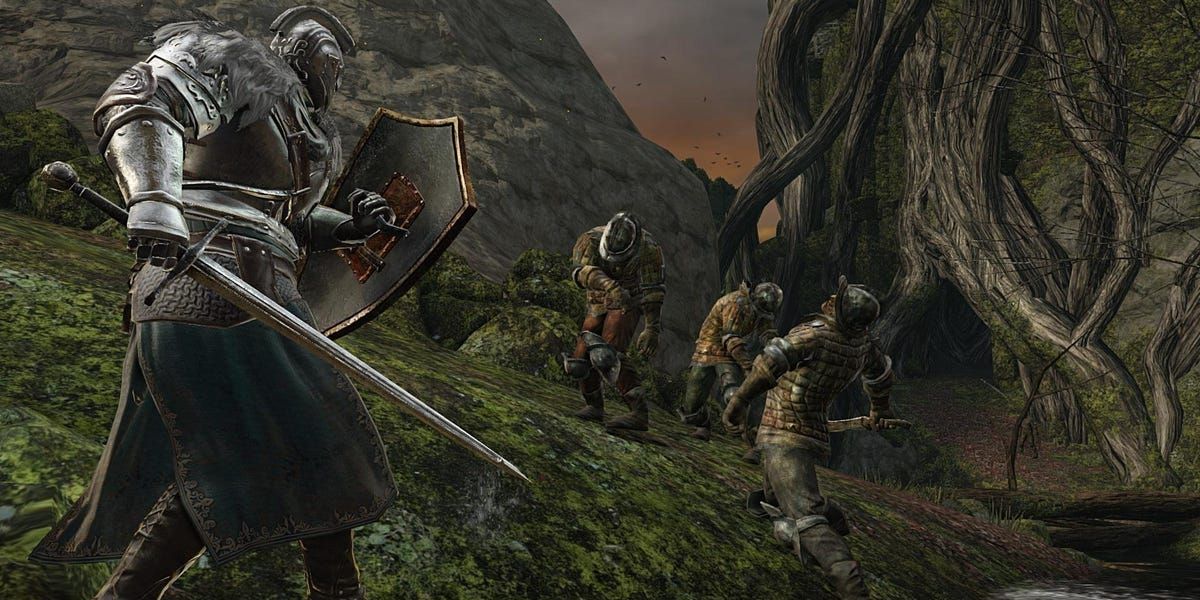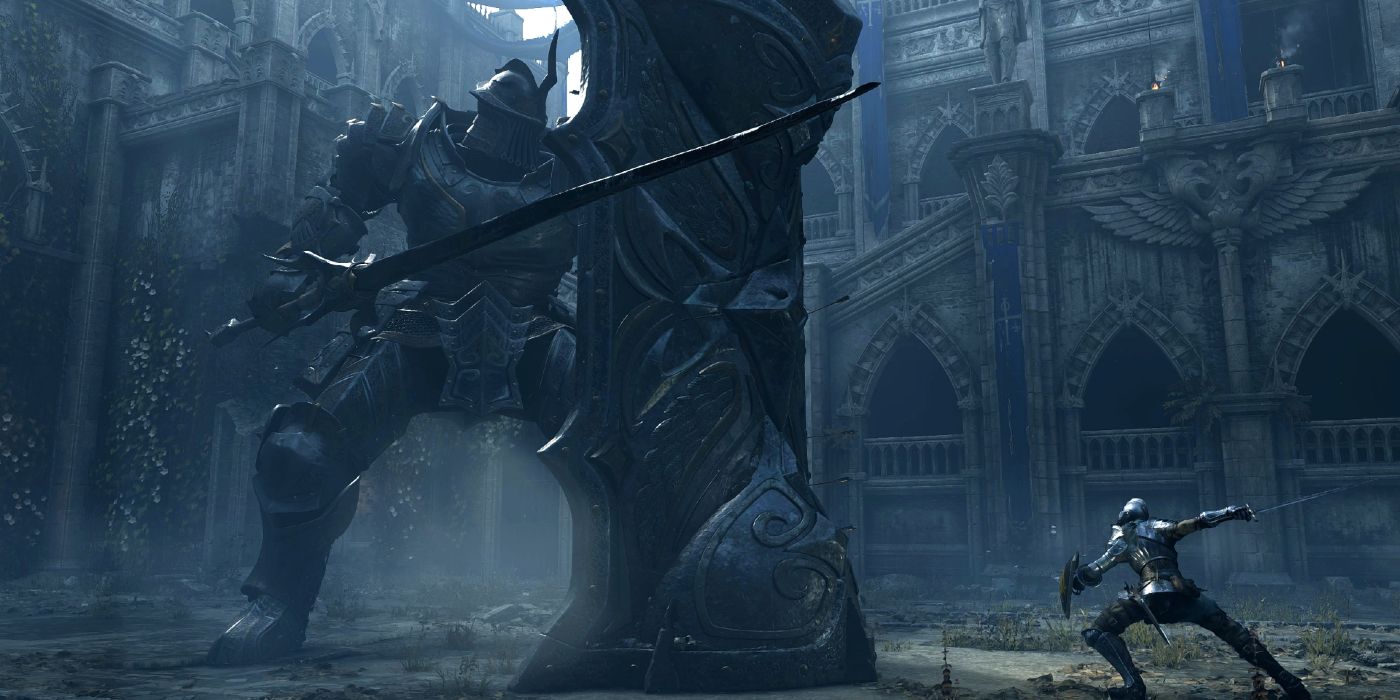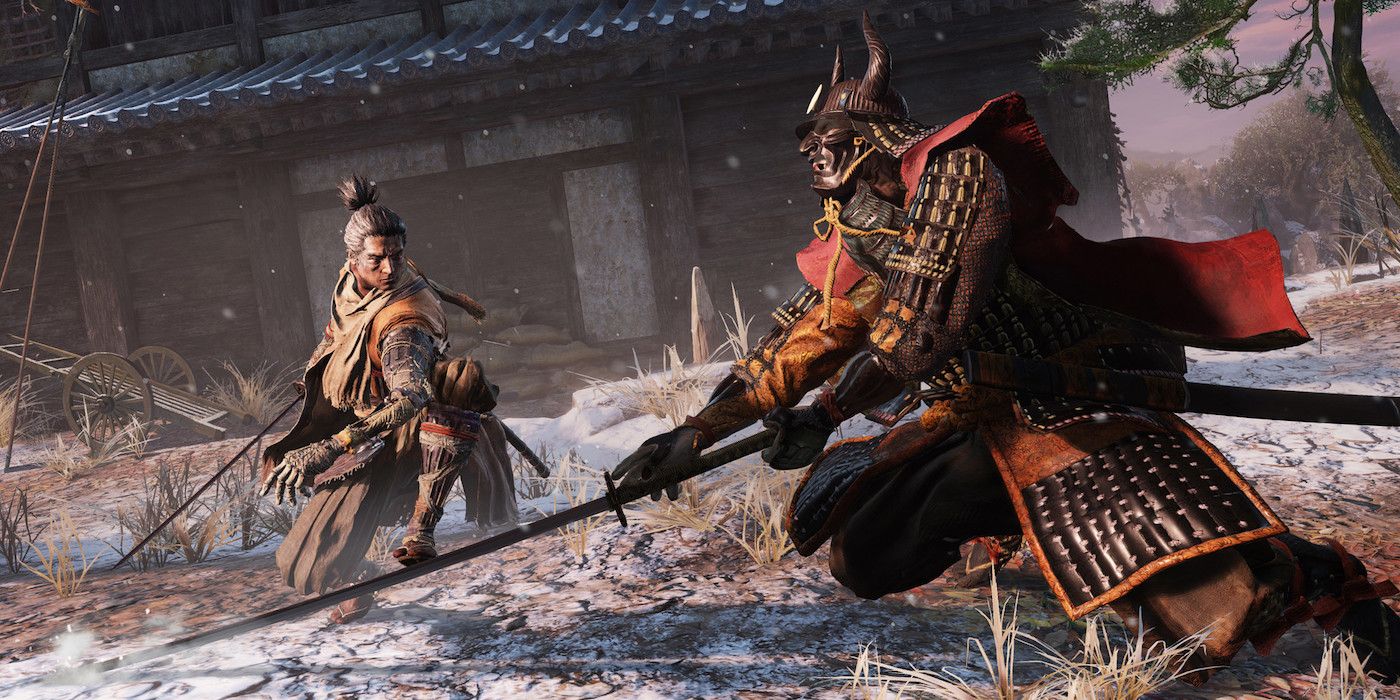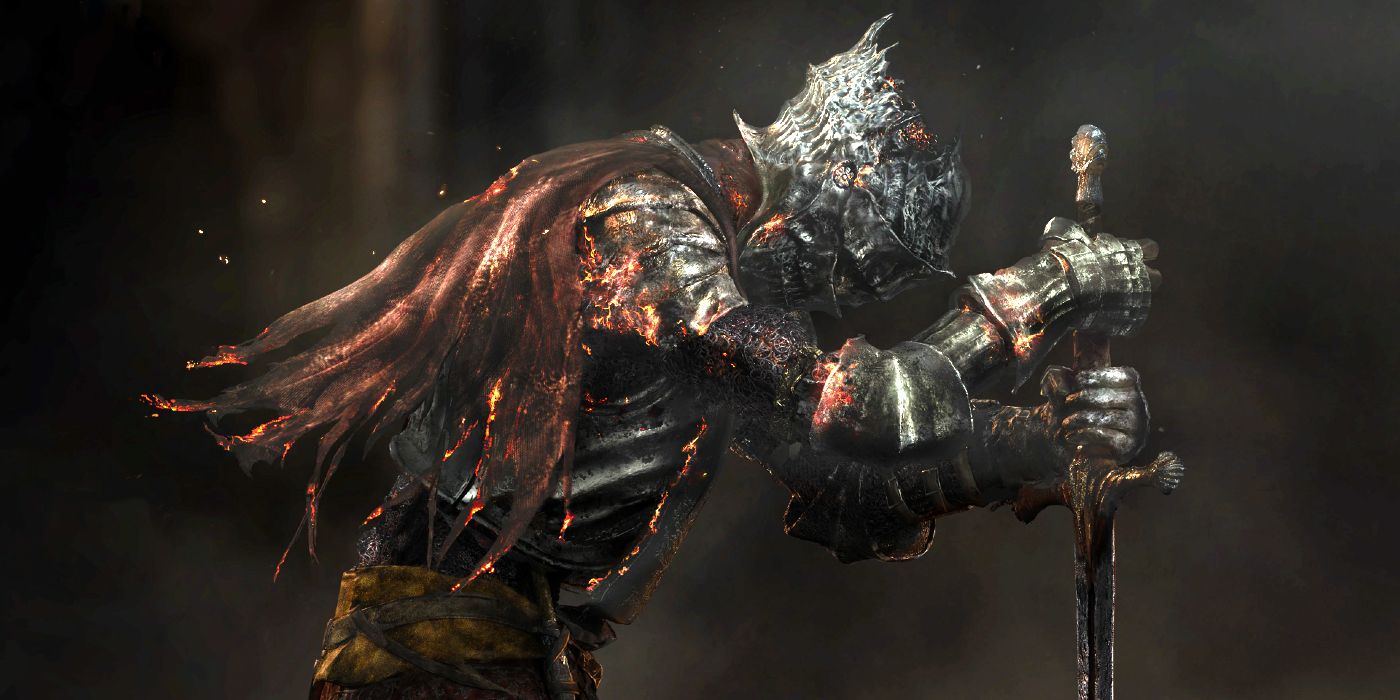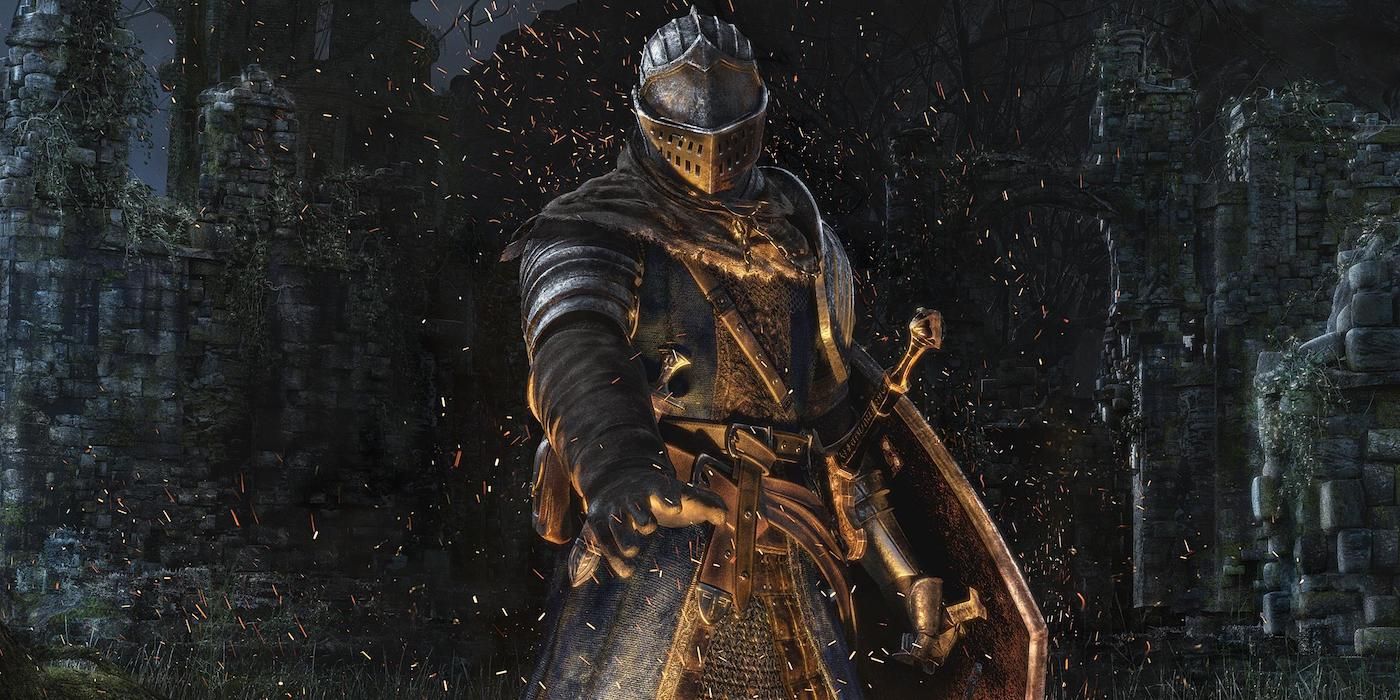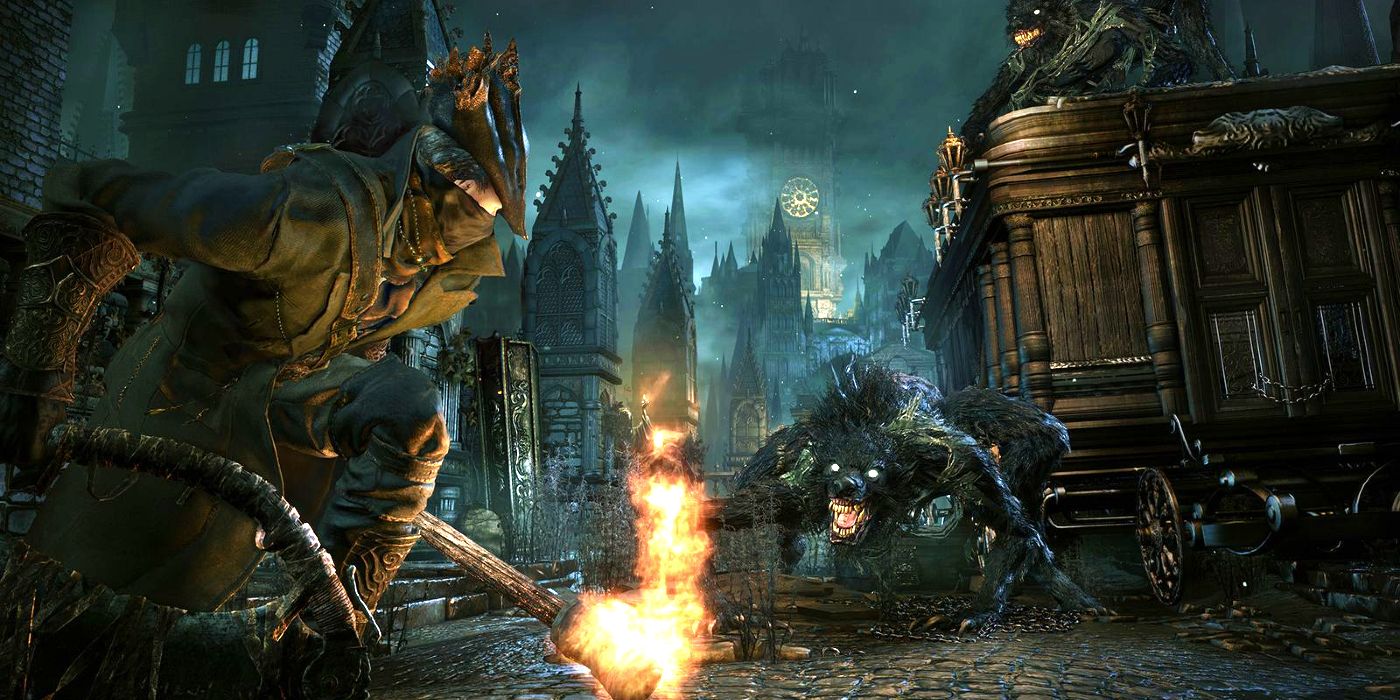In a medium as old as video games are now, most of the time you can say you’ve seen it all. However, when Demon’s Souls was originally released back in 2009, it unleashed upon the world a new type of game that, to this day, remains one of the most influential of the past decade. Beyond the memes of “git gud," the core gameplay, environmental design, and storytelling techniques behind the Soulsborne games keep fans coming back time and time again. As FromSoftware's long-awaited Elden Ring is readied for a January 2022 release, it seems like a good time to re-visit and rank the games in the Soulsborne series, while also taking a look at the closely connected titles such as Bloodborne and Sekiro: Shadows Die Twice.
6. Dark Souls II
This shouldn’t come as that big of a surprise to anyone who’s played through all of the Soulsborne series. Though it has its fair share of fans, Dark Souls II is still far and away the worst title in the series. While the game would tighten up some areas that it was otherwise lacking in the original release with remaster Scholar of the First Sin, the end result is still a slog to get through at times. But with all the negatives that do surround the game, the worst Soulsborne game is still much better than a lot of other titles in the genre. There are a number of truly memorable environments included, as well as some great music (the Majula theme is arguably the best hub theme in the entire series). However, you can really tell that with series creator Hidetaka Miyazaki working primarily on Bloodborne, Dark Souls II was definitely missing something.
5. Demon’s Souls
Unlike the games that will follow on this list, the quality gap between Dark Souls II and Demon’s Souls is a rather large one. When playing Demon’s Souls, it’s clear from the outset that this is the first attempt in something that will no doubt be refined as it continues. Because of that, there’s a lot of small speed bumps that might leave you scratching your head if you’re playing it for the first time after already playing other entries in the series. There’s a great case to be made that, with the Bluepoint Games remake available on the PS5, it’s actually a perfect place to jump into the series for newcomers. You’ll often hear Souls veterans state that the first game you play in the series will be the one that you’ll think is the hardest, but even by that standard Demon’s Souls is still one of the easier games in the franchise.
You’ll see certain gameplay mechanics present, like consumable healing items that don’t refill, that were partially implemented into Dark Souls II but would primarily make their return in Bloodborne. Because of that, you might be finding yourself farming some grass to make things easier on yourself. One of the biggest draws of these games is also the boss fights, and much like other aspects, you can see the idea present here in its infancy, fully realized in later games There are your typical FromSoftware boss battles, such as the brute Flamelurker, and also traces of more abstract boss designs, like the Dragon God. There's also the expertly presented Maiden Astraea fight, which remains one of the most effective thematically presented boss battles in the entire Souls series. Though it's not near the #1 spot on this list, Demon's Souls is still worth playing, and a great blueprint of what the series would later become.
4. Sekiro: Shadows Die Twice
Picking up with the fast combat nature that Bloodborne succeeded with, Sekiro: Shadows Die Twice was an interesting departure from the typical Souls-like format. Though the unorthodox approach to storytelling in FromSoftware’s games is one of its most intriguing aspects, Sekiro decided to look at it from a more familiar narrative-driven angle. The end result is more welcoming to those that might have otherwise been put off by the often cryptic nature of their previous titles, which would often leave players sorting through lore in the game's menus as part of item descriptions.
A lot of the problems that people have with Sekiro stem from its more restricted nature. Though Sekiro himself has various tools that he can utilize in and out of combat, you’re restricted to one weapon. For many people, much of the fun of the Soulsborne games is the experimentation with the various weapon types, and in Sekiro that’s completely absent. With that being said, this is some of the finest combat in any FromSoftware title. When Nioh was released two years before, it left some people yearning for that type of refined, quick-paced style of combat, and Sekiro delivers heavily on that front. The fast-paced, oftentimes multiple-phased boss battles are thrilling to take part in. It's a game that rewards patience as well as aggressiveness, as mechanics like parrying act as your key to survival.
3. Dark Souls III
Dark Souls III is an interesting game in that you can definitely see the knowledge carried over from the team’s previous experience on Bloodborne. Rather than the “slower” nature that the original Dark Souls incorporated, the third entry in the franchise ramps up the speed quite a bit. While many of the other games in the series up until this point would allow newcomers to also jump in with ease, Dark Souls III is a game that actually rewards players who have played the original Dark Souls. You’ll notice many references as you find yourself making your way through the world, enhancing the overall experience.
It could be argued that Dark Souls III is also the most difficult game in the franchise; of course, this is often a subjective thing, especially for one’s familiarity with these types of games. Even so, if you’ve played multiple titles in the series there’s a chance you’ll still find yourself having a difficult time. The DLC especially ramps this up, as bosses like Darkeater Midir and Sister Friede will push your combat knowledge to the limits. It’s truly a great send-off to the Dark Souls series proper.
2. Dark Souls
Though Demon’s Souls was the starting point in this long journey, many will look to Dark Souls as the one that kickstarted the FromSoftware reign that we have been in for the past 10 years. A compelling story acts as the backdrop for some of the most enthralling combat in the entire series. Unlike later entries, there’s just something about the combat that could be seen as simple to learn but difficult to master, and its openness to experimentation supports the inclusion of New Game+ even further.
Moving away from Demon's Souls' level-orientated design, Dark Souls instead opts for an interconnecting map. It’s hard to overstate just how effective this is to the overall game, and how its inclusion and implementation enhance the overall experience. There’s nothing quite like traversing and spending countless hours attempting to make it through one area, only to later see that it connects back to a place you had previously already passed through. Many people believe that Dark Souls is still at the top of the pack when it comes to level design, and it’s difficult to argue against that. Now after fast combat games like Bloodborne and Sekiro, it could be seen as difficult to go back to the slowness Dark Souls, but the journey that you undertake is more than worth it even if you don't click with the combat.
1. Bloodborne
The first game in the series to step away from the Souls name and mythos, Bloodborne, originally revealed as "Project Beast," continues to shine to this day. Moving away from the more methodical and somewhat slower-paced combat that the first two Dark Souls games and Demon's Souls employ, Bloodborne is like a shot of adrenaline in comparison.
Removed is the reliance on shields; instead, you’re rewarded for playing aggressively. Due to that dramatic shift, the game’s style of play is completely thrown on its head. For example, there’s the introduction of the rally mechanic, which allows players to gain back lost health if they attack the enemy that hurt them within a few seconds of initially being attacked. It’s this gameplay change that’s arguably the best mechanic that FromSoftware has implemented into any of their titles since the original Demon’s Souls. We’d see this faster gameplay later implemented into the following titles, such as Dark Souls III and Sekiro, and honestly, FromSoftware’s games are better off for it. There are also a lot of great things to be said about The Old Hunters DLC, which features some of the finest boss fights the entire series has cooked up, such as Ludwig and Lady Maria.
The Lovecraftian cosmic horror that the game swerves toward in later portions is the perfect detour from the typical fantasy setting that the earlier Souls games excelled in. Vast interconnecting environments are the bread and butter of the Souls series, and Bloodborne continues that tradition, as you’ll find yourself stumbling upon areas that are familiar yet unexpecting. It’s no wonder that fans continue to beat the drum for a remastered Bloodborne, as in its current state of 30fps with bad frame pacing, it can be difficult to return to at times. Even though it has those drawbacks, it's still an incredibly engaging game, and to this day, the apex of the entire Soulsborne franchise.

